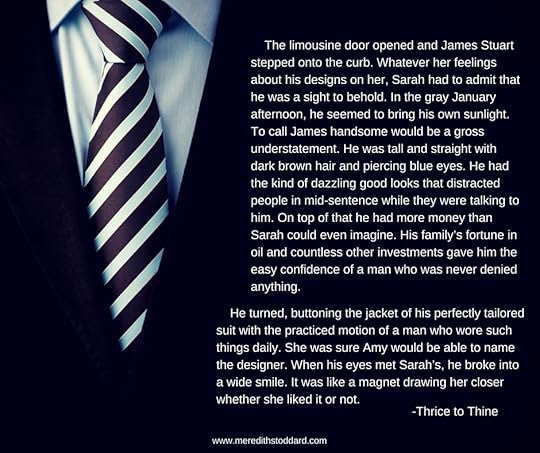Meredith R. Stoddard's Blog, page 6
June 19, 2018
Wanna see a new cover?
Book 3 beta reading is chugging along. I have already gotten feedback from a couple of my readers and so far so good. There are of course, some things that need ironing out, but I'll be tackling that in good time.
So, it's about time I showed the world the cover for Thrice to Thine. Of course my newsletter subscribers and Kettle Holler Literary Society members have already seen this, but it's about time the rest of you did too So, here it is.
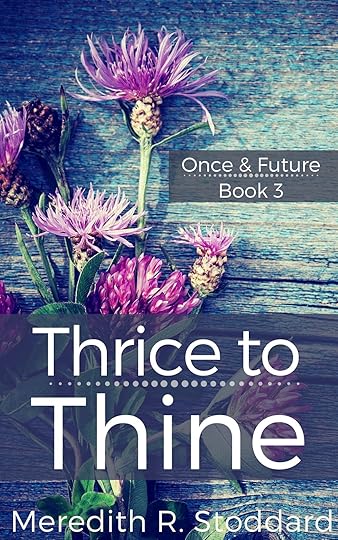
Thistles, because we're going to Scotland in this one, and that's about all the spoilers you'll get. But I love the look of the thistles against the rough wood, and the blue reminds me of Stuart Blue tartan. It seemed like the perfect blend of Scotland and Appalachia to round out the first three books of the series.
I am aiming for a September release, though I don't have the exact date yet. I'll keep you posted.
In the meantime I have updated my Project Pipeline with what I'm working on next.
May 25, 2018
Long overdue update
I know. I know. It feels like I haven't updated my blog in FOREVER. That's because it's been far too long, and life has been crazy.

Not a sight you want to see in the kitchen of your new house.
I seriously don't know how military families handle moving as often as they do. I did it ONCE since my children started school and it was absolutely awful. If you follow my social media at all, you've seen the madness that we have endured with issues that cropped up with the new house, including but not limited to' a leaky bathtub, structurally unsound office, faulty water heater, and an incomplete shower in the master bath. Also, we hired the movers from HELL, who took twice as long, and way overcharged, and lost a ton of stuff. Fortunately, we seem to have gotten most of the kinks worked out, and we're finally settling in and beginning to remember what we saw in this house in the first place.
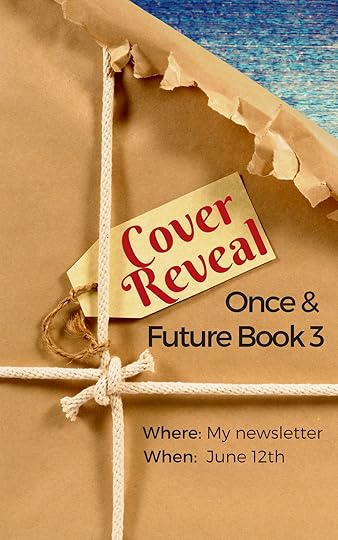
What you haven't seen is the emotional stress involved in moving kids to a new school system, family drama, and general exhaustion from the whole process. I seriously do not ever want to move again.
The good news is that in the midst of that madness, I have still managed to work on Book 3, and it is nearly ready for editing. (Hallelujah!) I still don't have a release date to give you, but it is getting closer. II'm going through my last pass of revisions before editing and beta reading now. When I'm done, I'm going to reveal the cover for the new book.
I am super excited about this cover. I actually designed it months ago, but I was too far away from finishing the book to show it to you. Newsletter subscribers will see the cover first. A week later I'll put it out on social media. I really can't wait for you all to read this book. I think you're all going to love it.
Reminder: To see the cover for Book 3 first, you need to be on my mailing list. The form is below. Fear not, I won't bombard you with frequent newsletters about what the cats are up to. I only send news when I have news to tell. Although you will be the first to know what's coming.
Subscribe to our mailing list
January 6, 2018
Bliadhna mhath ùr gu dearbh!
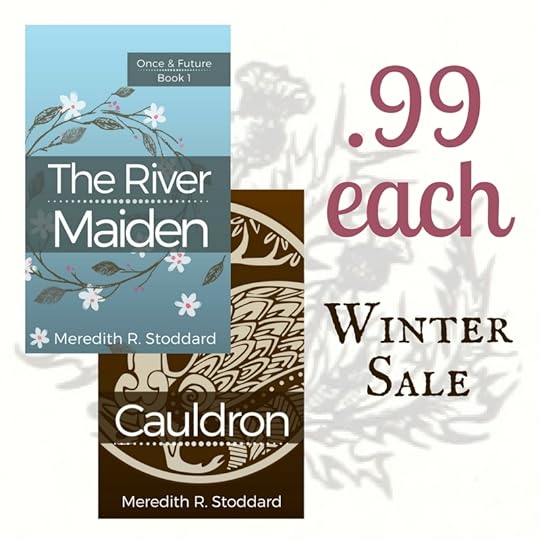
Happy New Year indeed! There is a lot to be excited about in 2018, starting with a winter sale. Both The River Maiden and Cauldron are only .99 for the next few days. So, if you haven't read one or both of them yet, you can grab them. If you have, please tell a friend or two about this deal.
The last two weeks of 2017 was a VERY busy one for us.
I managed to FINALLY finish drafting Book 3 of the Once & Future Series just before Christmas.We sold our house in less time than we thought it would takeWe found a new house and are (fingers crossed) ironing out the details of moving at the end of January.I can't tell you how excited we are to be moving closer to Eric's work and family.
I'm just as excited about Book 3 which I plan to begin revising as soon as the house is packed up. This time we'll be in Scotland for the whole book. There will be new characters that I'm sure you're going to love as much as I do, many revelations about Sarah's family and the Stuarts, and of course more of Sarah and Dermot. If you're interested in some teasers, you can find them here.
I am also working on a short story about Amy Monroe, that may develop into a book of her own.
2018 promises to be a great year. I'm hoping you all have big plans for it too.
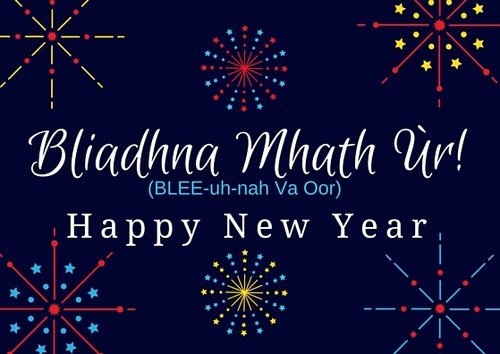
November 22, 2017
To Anglicize or Not To Anglicize
As I’m finishing up the draft of Book 3, I have been struggling with a character’s name. He’s a new character in this book and I am confident that everyone is going to love him (And I mean LOVE him). The thing is, he has a Gaelic name. It’s not a difficult or crazy Gaelic name, but with its Gaelic spelling, R-U-A-R-A-I-D-H, it might be a bit hard for some folks to pronounce. It’s kind of essential to this guy’s character that he uses the Gaelic form of the name. He’s from the Highlands and works with tourists, so his Scottishness is part of his brand. But then I worry about readers who are challenged by Gaelic names. Should I anglicize it to Rory?
I had a similar question about spelling Eilidh (AY-lee) in Cauldron and thought I would handle Ruaraidh in a similar way. I thought about posing this question to my readers group, the Kettle Holler Literary Society, on Facebook. So, I popped on to Facebook and I ran into this.

This has shown up in my Facebook feed at least a dozen times in the last 48 hours. The first time I saw it, it was kind of funny. By the tenth time it and people's reactions to it are starting to grind my gears.
As a Gaelic learner, I’ll be the first to admit that Gaelic spelling both Irish and Scottish is hard, especially if English is your first language. I try to have a sense of humor about these things but the language nerd in me sometimes gets my back up when people start sneering at Gaelic spelling. Admittedly, Gaelic names can be difficult, but I have a few issues with this particular list.
These names are Irish. While Irish is a Celtic language, the word Celtic encompasses some other languages that are not included in this list; Scottish Gaelic, Welsh, Cornish, Manx…These phonetic pronunciations are gross oversimplifications of the actual pronunciations. Mostly because there are a wealth of subtle vowel and consonant sounds in Irish that most anglophones (That’s English speaking people) have trouble wrapping our clumsy tongues around. Some of these sounds and spellings did make their way from Celtic languages into English. Where do you think our multiple gh sounds come from or our tendency to soften consonants when they are followed by slender vowels (i or e)? English speakers can quit their sneering at Gaelic spellings because English is flipping weird. There are a lot fewer exceptions to the rules of grammar and spelling in Gaelic than there are in English. That’s why English is such a hard language to learn. What you’re missing while you’re marveling at Gaelic spelling and pronunciation is that it’s the hardest part of the language. Once you’ve got those down, the grammar is actually pretty easy, easier than English.While some folks are laughing at a few Gaelic names on the internet, there are people hard at work preserving and promoting these languages. Calling these “Celtic” names implies that they are somehow ancient and only used in fiction or fairy tales. That couldn’t be further from the truth. There are plenty of people out there with these names, because this is a living language. Unfortunately, thanks to cultural shifts and anglophone dominance most of the Celtic languages are under threat.
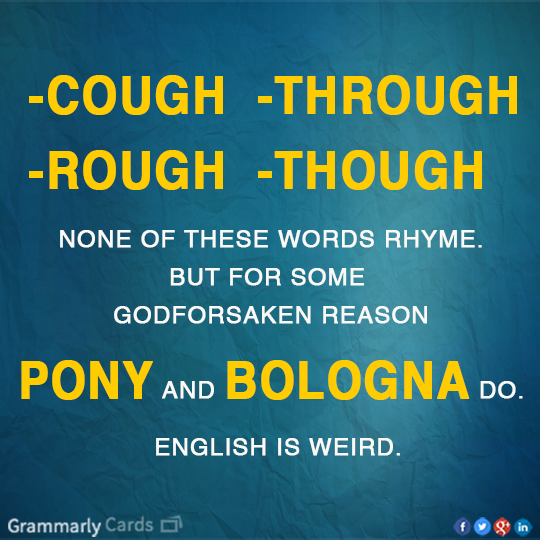
Language is a lot more than just words. Culture informs language. It determines a people’s frame of reference. It displays a community’s priorities and social mores. Studying a language is studying a culture. And preserving those languages is preserving the culture they came from. Minority languages, not just Celtic languages, are under threat every day. Native speakers die out. Children don’t learn or use the language of their grandparents. Outsiders move into areas where they are spoken and expect minority speakers to use the dominant language.
So go on yucking it up over Irish spelling while the language fades. I hate to tell you, but all the things you probably love about Ireland are tied up in that language and as it goes, some of those uniquely Irish things will fall away as well.
I realize that Gaelic spelling and pronunciation is hard for people who aren’t used to it. For most folks it’s not something you just casually pick up. I will grant that some of the mispronunciations can be hilarious (Loaghaire/Leghair). They can also be painful and occasionally hurtful especially when they are a person’s name.
That’s why when we were naming our daughter, I (the Gaelic speaker in the family) talked my husband out of names like Moira and Sorcha. Having gone through childhood with an anglicized Welsh name was enough for me to know the difficulties she would face with Gaelic names.
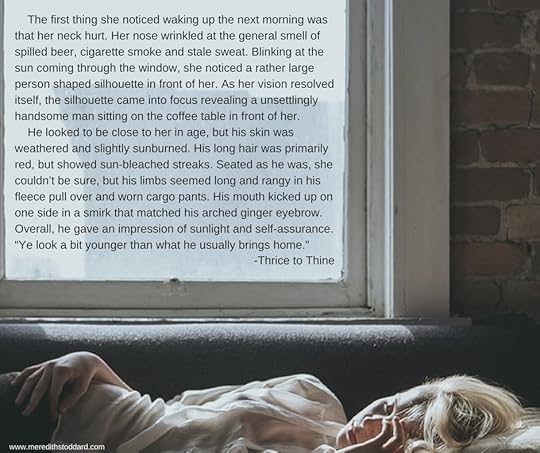
seriously, y'all are going to love this guy.
However, my fictional Scottish guy who lives along the north coast. Well, he gets to keep his Gaelic name, because it works for him and because he’s fiercely Scottish. So when Book 3 is released and you get around to reading it, just remember R-U-A-R-A-I-D-H sounds like ROO-ree, at least to English speakers.
November 9, 2017
The Blue House
“But I’ve only ever lived here!” T cried through stressed out eleven-year-old tears as I tried to convince her that she needed to pare down her plush Pokemon menagerie to no more than a dozen. “I don’t know how to live anywhere else.”
It’s true. We built this house when her brother was still a baby, and she was no more than an idea. Thirteen years ago, we looked around our mid-century rambler full of brand new baby gear and realized that we needed more house to accommodate our growing family. So, we packed Baby K into the car and went in search of a home we could grow into, one that would last us a long time.
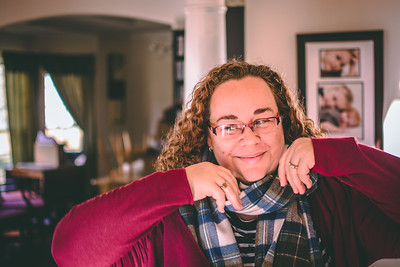
When we found Belmont, we fell in love. There were sidewalks and streetlights and even some neighbors that we knew already. The first time we walked into the model home, we were sold. Huge windows meant tons of natural light, and make the house feel even bigger than it is. The columns in the entryway reminded me of the ones in my grandmother’s Victorian era house in North Carolina. We could picture our children coming down the stairs. The open plan of the kitchen family room and breakfast room was perfect for a young family. I could cook dinner while keeping an eye on the kids. And the possibility of a third floor excited my imagination.
So, we built that same model. Thinking of kids learning to walk, we chose to have the corners of the walls rounded to protect little heads. We picked hardwood floors, and the options we wanted. Thinking of future possibilities, I insisted on stairs up to the third floor. I even chose the distinctive blue siding, a nod to another blue house that I lived in when I was in college (The River Maiden readers will be familiar with the blue house on Ransom Street). It was everything we wanted and more.
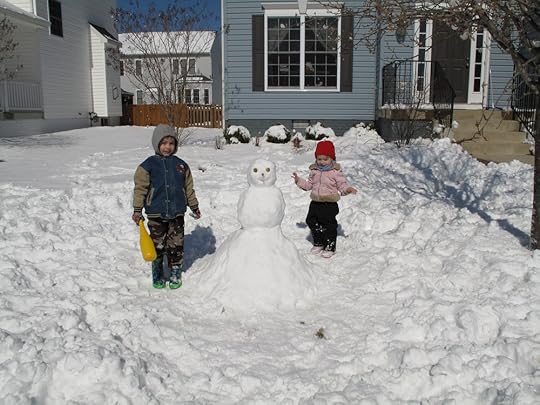
We moved in almost exactly thirteen years ago. And we’ve had a magical thirteen years. Baby K will start high school next year, and this is the only home T has known. Thirteen years of Christmases and snowfalls, first days of school and Halloweens (very big in this neighborhood). Thirteen springs with the pear tree blooming lush and white. It took a couple of years, but we added a deck. In a few more, we finally finished a room in the attic. I call the ‘lady loft’. It’s my office and where I do the work of researching, publishing and selling my books. I’ve written all of my books in this house.
But after thirteen years, it’s just not working for us anymore. When we bought the house, my husband was working in Prince William County, and I was working in Fredericksburg. After both of us got caught up in the dot com bust of the early 2000’s, we liked the idea of living between the job markets of northern Virginia and Richmond. We reasoned that if one of us got laid off, we would have a broader area to look for work.

Now, I’m working at home and he’s commuting four hours a day to and from DC. That leaves me basically a single parent during the week. Since we don’t have the option of picking up our much-loved house and moving it closer to DC, we’ve put the house on the market. And we’re working with the kids to find a home that suits us and will shorten his commute thus improving the quality of life for all of us. Naturally, there is some adjustment, as evidenced by T’s outburst. With many hugs because change, even when it’s for the best, is hard. We’re working together as a team giving everybody a voice.
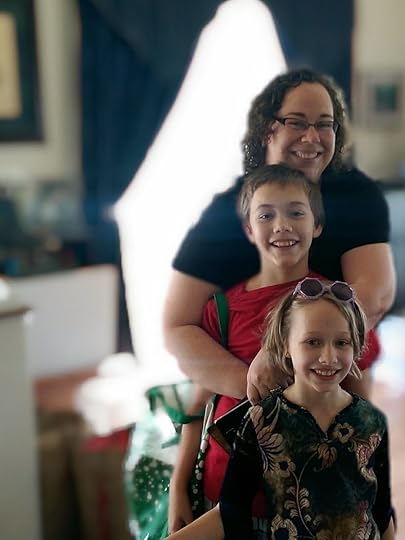
Photo courtesy of Dad's Eye View
For the next family that lives here, we want to welcome you. We want to tell you about the fun the neighborhood has on Halloween, and the way folks light up their houses at Christmas, and how beautiful the pear blossoms look against the blue siding. You’ll love how the crepe myrtle beside the house meets the one in the neighbor’s yard to form a perfect flowery arch. The neighbor’s yellow tabby cat will probably greet you when you come home. His name is Cleveland and he loves to be scratched behind the ears. In August, gladiolas bloom in the back yard. There has been much happiness and love here. We hope you find some too.
October 18, 2017
Me too
I don't consider myself a poet, but I was inspired by #MeToo campaign that I've seen on social media. When I shared the post that you've probably seen friends sharing without adding a personal story, a couple of my friends commented with their own stories. Then I saw quite a few of my friends sharing their stories of harassment and assault. Many of them sounded familiar. Some of them brought me to tears. The sad truth is that almost every woman I know has a story.
So, I put a few of my stories into this piece. I am a lot luckier than many women. Mine are stories of harassment and minor assaults. These are things that too many women have come to accept as part of being women. We're always on our guard. We frequently bite our tongues and ignore rude and lewd comments because we don't want to appear weak or overly sensitive. We try not to let it bother us, but it all feeds into a culture of silence. All of us have experiences like these, so why bother talking about them?
That's exactly what the #MeToo campaign is trying to point out. If we believe that we are alone in dealing with these things, then we won't speak up. If we just accept harassment and even minor assaults, that culture will only continue. And those who harass or commit those minor assaults may even escalate their behavior, because no one has called them out. No one has shown them where the line is. I don't know about you all, but I don't want my daughter to have to face some of the treatment that I grew up with.
The #MeToo campaign was started about 10 years ago by activist Tarana Burke and amplified this past weekend by Alyssa Milano. Here is an interview with Burke and Democracy Now! that explains the movement and a discussion about why it's so important.
And here's my take.
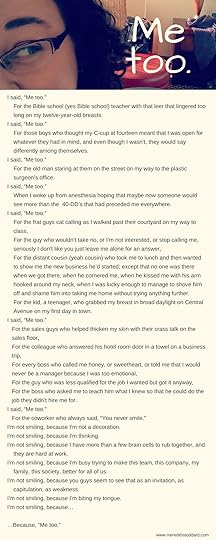
September 28, 2017
1000 Likes Giveaway
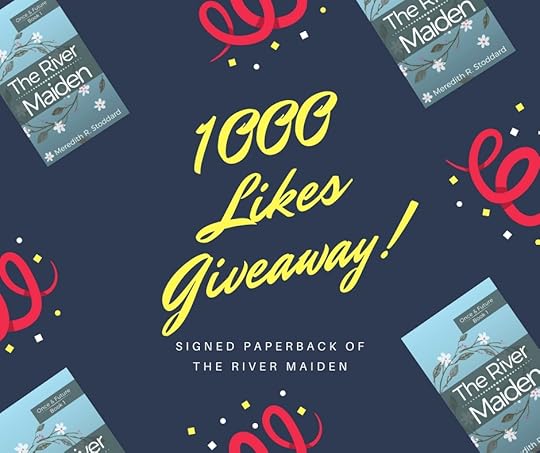
Tanya Yarbrough is the lucky reader who won a signed copy of The River Maiden in my 1000 likes Giveaway on my Facebook Page. Thanks to everyone who has liked my page, I plan to keep up the regular posts of teasers and folklore and book related info.
If you haven't liked my Facebook page, what are you waiting for? Click here.
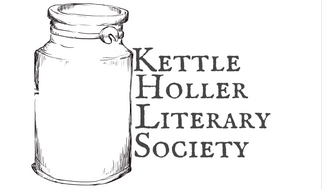
Also, if you want to talk about my books with other readers without worrying about spoilers, you can join the Kettle Holler Literary Society.
August 14, 2017
Not Giving Up on Goodness
It's Saturday afternoon, August 12th, 2017. I just spent most of Friday helping a friend work through some serious mental health issues. Then I got bombarded, as all of us did with images and stories from Charlottesville. I live just over an hour away from there. I take my daughter there for Saturday Enrichment classes, or Nerd School as she calls it. It's a great town. Between my friend and the hate being spewed in Charlottesville by Saturday afternoon, I am heartsick and furious, frustrated and fearful. I have to get out of the house.
Twenty minutes later I find myself standing in front of a huge bin in the space between the yarn aisles and the fabric thinking that yarn therapy might be just the thing I need. This is my favorite spot in the craft store. The mill ends. These are skeins of unknown yardage and unknown fiber content bagged by weight and sold at a deep discount. Mill ends happen at the end of a run of yarn when what's left over doesn't make a whole skein. They can also be made from a dye lot that's a little too far off the intended color, or the setting is off when plying and the yarn doesn't have enough twist. They're a way for manufacturers to recoup the loss of what would otherwise be waste.
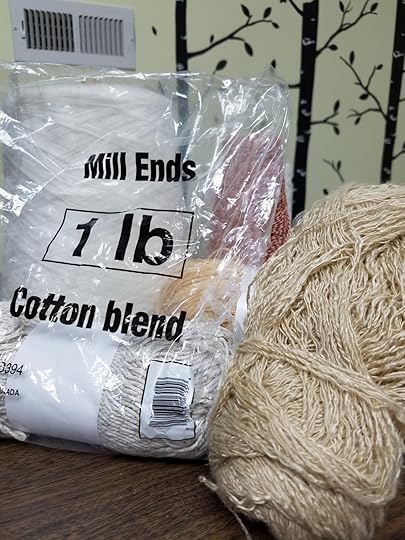
I love them for a number of reasons. First, I'm cheap. Also I find mill ends to be inspiring. It's like a challenge to find an odd yarn that doesn't fit into the neat bins of pretty yarn on the shelves, choosing just the right pattern to show it off and diving into a project hoping that I have enough to finish. When I find one that looks good, I check around me to make sure there's no one looking and I tear open a corner. I probably shouldn't, but how else am I supposed to tell how soft it is? I poke my finger in and feel the yarn, and if it's soft enough and interesting enough, I'll take a chance on it. I've gotten pretty good at estimating the size of a project that I can make with a bag or two of mill ends. Probably because I've been using them ever since I learned how to crochet at the tender age of eleven. Truth is, I learned to crochet with mill ends. I don't remember seeing them in craft stores back then though. I got mine from my Granddad.
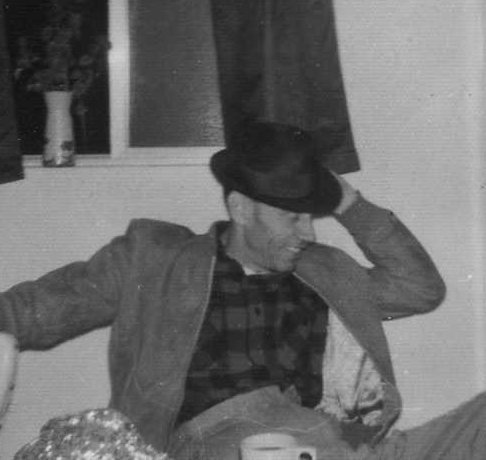
My grandfather, Lewis Davis, worked almost his whole life in a textile mill of one kind or another. And when I say all his life, I mean it. Somewhere between the ages of twelve and fourteen, my granddad dropped out of school and went to work in the Glen Royal Mill to support his mother and younger siblings. He worked his way up over the years learning to operate and maintain most of the machines in the mill. When the mill closed down, he went to another, and when that one closed down, he got a job working in the College of Textiles at N.C. State.
At State, students would experiment with different fibers and different settings. Sometimes they would spin yarn for practice. When they were done there would be cones of yarn; odd yarn that wouldn't likely sell. Maybe the fibers were a little rough or not enough twist. It wasn't something that most people would want to knit or crochet. But having grown up during the Depression, Granddad couldn't allow that kind of waste. So he brought it home. Cones and cones and cones of it. He gave it to anyone who thought they could use it, but most of it went to my grandmother's Aunt Matt who could and did crochet just about anything. He didn't limit his salvaging to yarn. My grandparents' garage and barn for years were full of shuttles, bobbins, a discarded loom, a table sized drum carder...Almost enough stuff to start our own mill.
Recently, I was reminded of another kind of my granddad's mill ends. Folks who might not have been in ideal situations, gaps that he could fill or find solutions for. At my grandmother's 100th birthday party, one of those folks, Roy, told the story of how his father worked hours that meant he couldn't spend time with him. My granddad saw that he needed some fatherly attention, and made time regularly to take him fishing on Saturday mornings. When Roy grew up to be a student studying textiles at N.C. State Granddad helped him find a job after he graduated.
Roy wasn't the only one. My grandmother tells the story of the time Granddad saw a neighbor's son in the mill village who couldn't afford shoes. Without waiting a day or even an hour, Granddad stopped what he was doing and took the boy to town and bought him a pair of shoes. There was the autistic cousin whose own father wouldn't make time for him. But Granddad did. It meant so much to my cousin that after my Granddad passed, he changed his name to Lewis.
It didn't always work out well. He once had to drive 40 miles out of his way at gun point after a hitchhiker decided he didn't want to wait for another driver to pick him up. And there was the time he loaned someone $10,000 for 'business opportunity'. He never saw that money again. But he didn't stop taking chances on people especially those who really needed someone to take a chance on them.
My great grandfather abused and then abandoned his family leaving my granddad to pick up the pieces. It would have been easy for my granddad to become cynical and closed off. But he didn't. He never gave up on goodness. He wasn't flashy about it. He didn't show off his generosity or ask for thanks. He just went about his life in his own quiet way, gathering up his community's mill ends and turning them into something beautiful.
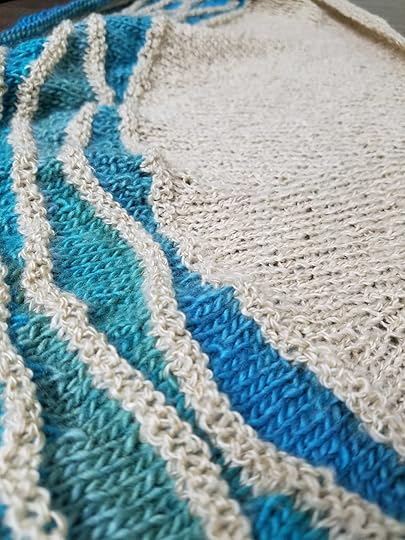
So, exhausted and heartsick in the face of all the ugliness and hate today. It would be easy to throw up my hands and write certain people off as irredeemable. It would be easy to give up on goodness. I stand there in front of the discount bin wearily testing the hand of an odd bag of mill ends that caught my eye. The thickness is slubby, and the twist is uneven. The color is pretty plain. But there's a little bit of shine to it. I think it might a linen blend, so it'll soften nicely when it's worked and washed. I can make something beautiful out of this.
And after I've soothed my soul with a bit of knitting, I can get back to keeping an eye out for those other mill ends just like Granddad did.
August 10, 2017
The Trouble with Mr. Willoughby
Like so many in the Outlander fanmily, I am crazy excited for season 3. Voyager is far and away my favorite book in the series, and there is a lot to be excited about. We’ve got the print shop reunion, the epic throw down at Lallybroch and the infamous turtle soup. Plus, we’ll meet some new characters who are guaranteed to capture our hearts for seasons to come; Wee Ian, adult Fergus, adult Lord John, and of course Joe Abernathy.
But there are also some things to be nervous about. Will there be bromance level chemistry between Sam Heughan and David Berry? Will the print shop scene be as breathtakingly poignant as we expect? Will we ever grow to have sympathy for Brianna? The thing that I’m most concerned about however, is something that has the potential to generate some controversy around the show and not the kind embracing-the-feminine-gaze controversy that the show LIKES to stir up.
If you’ve read Voyager, you probably already know what I’m talking about. That is the character of Yi Tien Cho aka Mr. Willoughby, Jamie’s Chinese employee/sidekick whose drinking, and antics cause a few problems along the way in this roller coaster ride of a book, but whose acupuncture skills get Jamie across the Atlantic.
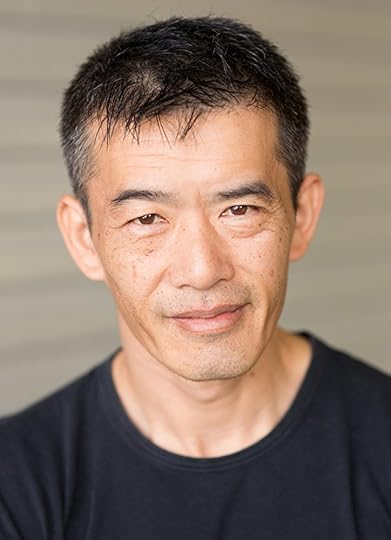
Hang out long enough where people are discussing Voyager, and you will almost inevitably hear from someone who is disappointed, uncomfortable or down right infuriated by the portrayal of Mr. Willoughby. His accent, behavior and obsequiousness are cartoonish, and exhibit many uncomfortable stereotypes that were certainly believed in Scotland in the 18th century when his part of the story is set, and sadly persisted well into the 20th century. Willoughby is literally a walking stereotype. And if that’s all there is to the character, then readers SHOULD be offended. I would be.
However, stopping at the stereotypical behavior of Willoughby and ignoring the character after he sticks Jamie with his acupuncture needles, does him a disservice. As Willoughby gets farther away from Scotland, he begins to shed those stereotypes like an uncomfortable coat. By the time they find themselves in the New World, he’s no longer Mr. Willoughby. He’s Yi Tien Cho, poet, fugitive, survivor.
It’s precisely that survival instinct that leads him to behave the way he does in Scotland. Yes, he gets into trouble occasionally, but by playing the subservient, comedian and occasional trouble maker, he disarms the inevitable racism that he encounters. Instead of hate and violence, he’s met with irritation and sometimes even kindness. He knows that the people in Scotland will tolerate a buffoon of a different race, easier than they will an educated poet of a different race. If he had shown up in Edinburgh with the dignity and sometimes bitterness at his situation that he shows later in the book, I think he would get a very different response, probably a more violent one.
His Willoughby persona is a mirror of the expectations of the people by whom he finds himself surrounded. The metamorphosis from Yi Tien Cho to Willoughby and back shows just how racist and xenophobic society was in the 18th century. This is the same kind expedient duplicity that Claire as a modern woman has to show to many of the 18th century men she encounters or that slaves have to show the plantation owners (including Mrs. Abernathy) that Jamie and Claire will see in the New World. Naturally, Yi Tien Cho finds sympathy among the rebelling slaves and decides to take his chances with them rather than remain Mr. Willoughby.
Let’s be honest, it’s the same kind of duplicity that many people of racial minorities are expected to show to ease their way through what is still (despite what some elements in our society might tell you) a white man’s world. Watch your minority friends smile or even laugh uncomfortably the next time someone makes an insensitive joke around them. How many women do you know who are constantly told to ‘smile’ and ‘be nice’ to get ahead? How many of our mothers told us things like ‘pretty is as pretty does’ and ‘you catch more flies with honey’? Our society is full of this kind of expedient duplicity. Why should the 18th century have been any different?
Unfortunately, some readers react to Willoughby’s stereotypical behavior, and write the character off missing the main point. Sadly, when you write thousand-page books centered around an epic love story side plots tend to be the parts that readers skip. That’s where I hope the show can improve on the Willoughby situation. It’s much easier in a visual medium to show that kind of subtlety from the start, rather than dragging readers through hundreds of pages of painful stereotypes for the big payoff at the end. I can only hope that the show’s writers thought of this when writing Yi Tien Cho’s scenes in season 3. So far, the casting of seems a step in the right direction. They have cast someone who is ethnically Asian (I’m not being intentionally vague there. His and NZ On Screen profiles don’t give much biographical information.) and is a talented actor. Have a look at his demo reel. I'm sure he's up to the kind of complexity I would like to see from this character. I hope the writers have given him the opportunity to shine with this character.
While I don’t think this character is the racist crime that some critics would have you believe, there is plenty about the character that is problematic as this astute Redditor points out. The more we get to know Yi Tien Cho, we find out that he’s not just an acrobatic drunk with a foot fetish, but he’s also a poet with a back story that sounds like it was directed by , an acupuncturist, and a pelican trainer. It’s as if a few National Geographic articles on historic China got smashed together into one person and it does a disservice to the overall point that the character makes by the end of his arc.
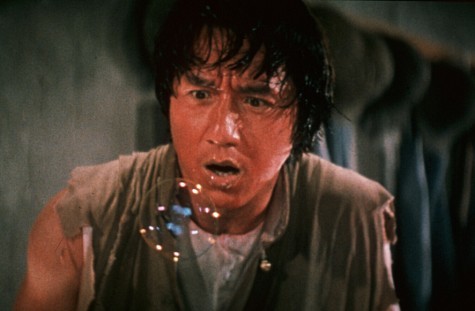
Many commenters when it comes to Mr. Willoughby point out that the book was written in the 1990’s, a time when people were less conscious of racial stereotypes at least when it comes to portrayals of Asian characters. Admittedly, I have noticed a generational divide among readers reactions to Willoughby. Older readers (And I simply mean older than my 43 years.) tend to find Willoughby’s stereotypical antics amusing. Whereas the readers who usually find them offensive, are mostly younger. At this point we are seeing this character through not one but three prisms of time and culture; 1) The portrayal of an Asian character living in 18th century Scotland, 2) Viewed through the eyes of an English woman solidly in the mid-20th century, 3) Written by an American woman in the late 20th century. That’s a difficult terrain to navigate, and it’s not a surprise that we find early 21st century readers getting caught in some potholes along the way.
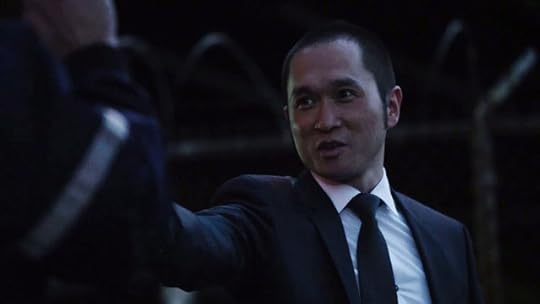
Diana Gabaldon isn’t alone in this by any means. I have spent the last week and a half researching an Indian character for one of my own books and trying to build a character that is more than a stereotype. The handling of Asian characters is something writers and Hollywood struggles with still. Think about most of the portrayals that you see of Asian men in films and television. While Asian women are frequently fetishized for their otherness or stereotypical submissiveness. Most of Asian male characters fall into one of three categories; gangsters, mystics, or lovable buffoons. Of course, they all know martial arts, right? We laugh at Jackie Chan’s Legend of Drunken Master. We fear the scary Yakuza and Triad characters on Daredevil. And we see guru/monk-like characters dispensing wisdom and punches to Anglo main characters.
...it’s possible to be grateful for the opportunity and have respect for your colleagues and still maintain a steadfast sense of your self-worth.
— Daniel Dae Kim
What you don’t see very often is an Asian leading man. Or when we have Asian leading characters, especially in film, we end up with non-Asian actors playing them or the character’s ethnicity being written away before it ever makes it to film. The recent controversy over the pay for Daniel Dae Kim and Grace Park who left Hawaii Five-0 after producers refused to pay them as much as non-Asian actors in similar roles, highlights another challenge. There is a reason why I’m using the term Asian rather than Chinese, or Japanese, or Korean, and it’s not because I don’t know the difference. It’s because Hollywood doesn’t differentiate.
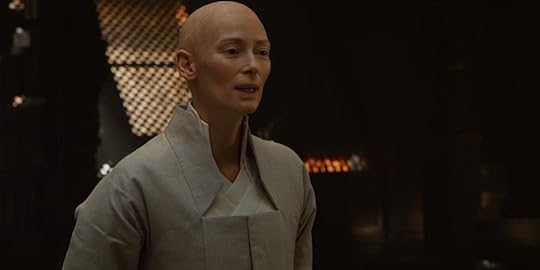
Fortunately, we are now seeing a market that pushes back against issues like this. The overall reaction to Kim and Park’s departure from Hawaii 5-0 was supportive of their decision. The kind of whitewashing that has been prevalent since film and television began is meeting resistance from audiences and critics. In the last few years, films like Aloha and Ghost in the Shell have tanked at the box office, largely because audiences didn’t like that Anglo-American actresses were cast to play Asian characters. The controversy around Tilda Swinton’s casting as The Ancient One in Dr. Strange started a valuable conversation about opportunities for Asian actors.
I have no doubt that the conversation will continue when viewing audiences meet Mr. Willoughby. Let’s hope that this increased awareness filtered into the writer’s room and they made the effort to give him more depth than we see when he’s introduced in the book. I fear that if they didn’t (past tense because those episodes are already written) it’s going to reflect very badly on the show that we all love. This is obviously not just an Outlander issue. We need Asian characters who are more than the stereotypes that we have had before. We need to stop expecting the actors who play them to resort to the kind of necessary duplicity that Yi Tien Cho does when he becomes Mr. Willoughby.
Additional reading/viewing
Interview with Eugene Lee Yang of Buzzfeed United Shades of America: It's ChinatownThe Psychological Effects of Whitewashing Asian CharactersA Brief HIstory of WhitewashingJune 20, 2017
Back to it
Well, I managed to write a little while on vacation, but now I'm back home and back to the grind. We had a great time at the beach, and picked up some new readers with the summer sale. Now, back to writing book 3.
If you missed the sale, remember the whole Once & Future Series can be read for free with Kindle Unlimited.
Of course it's Tuesday, so here's your teaser.
